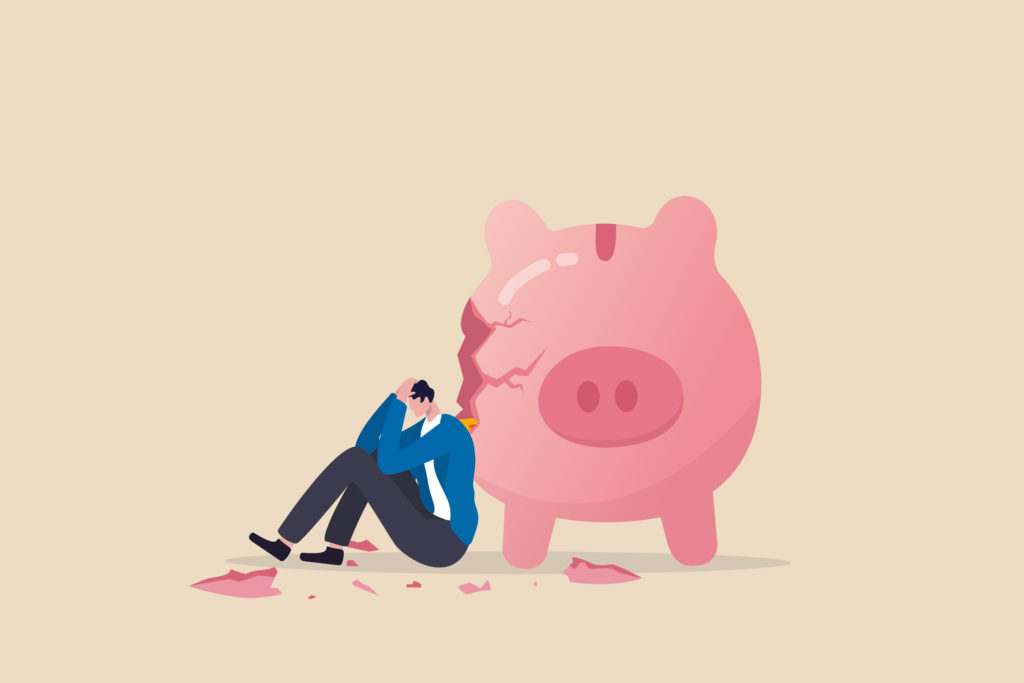
“Debt” is a four-letter word for many people.
By “four-letter word” I mean a profanity. Many people have used debt to chokehold their wealth-building prospects from the present to the distant future.
TransUnion reports that the average credit card debt is $5,910. The average credit-card interest rate is 24%. The Federal Reserve reports 35% of credit card users carry a balance month to month.
That’s insane.
To pay a 24% interest rate to finance a Starbucks Frappuccino is the epitome of immaturity and profligacy. It’s also stupid.
Worse yet, it’s the people who can least afford to pay a 24% annualized interest rate who are paying it. Nearly 48% of the credit user carrying monthly balances are under age 35 and over age 55.
Let’s set the record straight.
Credit use – everywhere and all the time – is financially destructive when used to purchase anything that is consumed or that depreciates: food, vacations, parties, clothes, furniture, appliances, jewelry, and automobiles (yes, automobiles).
And never, EVER, EVER, EVER purchase a timeshare (with or without credit).
We have a gray area with homes and student loans.
Your home is not an investment, it’s an asset. It’s an asset you use for lodging and shelter.
Homes generally appreciate, but they depreciate only when maintained. (The land on which the homes sits can appreciate separately from the house.)
Judicious debt – a mortgage – can be a wealth builder when used to purchase an appreciating home.
As for student loans, they are a bad idea for most students.
Student loans are expensive. They contribute to education inflation. They are difficult to discharge, as evinced by the student-loan problems reported today. They can burden you for decades after graduation.
Let’s consider the other side of the coin – judicious debt use.
Debt is used judiciously when used to purchase appreciating assets and cash-flowing investments.
Real estate – commercial and residential rental — readily lends itself to leveraging an investment for greater return.
There is a reason that real estate is a go-to wealth generator for many people. Borrow at 5% and buy an appreciating asset generating 8% annualized cash flow (with cash flow rising annually).
Use the cash flow to service and amortize the loan on that appreciating asset, and wealth accumulates over time.
The spread between the cost of debt and the cash flow generated from the asset matters most.
The traditional bank business model is predicated on this spread. “3-6-3” was the operational modus for years.
Borrow at 3%, lend at 6%, hit the golf course at 3 o’clock. It’s a bit more sophisticated today, but banks still operate on the same principal.
The yield curve influences the options to borrow at one rate and generate cash flow lending at another.
Banks traditionally borrow at a short-term rate (interest paid on deposits) and lend at a long-term rate, for real estate and business lending.
The strategy works well when short-term interest rates are lower than long-term interest rates. This is the normal yield curve most of the time.
But not all the time.
Today, short-term interest rates are higher than long-term interest rates. And as we saw with the mini-banking crisis earlier this year, that can be a problem.
But some companies are prospering in this unusual interest-rate environment.
When long-term debt was cheap, many companies loaded up on the debt, even though they didn’t necessarily need the money. They treated the cheap money as dry powder that would be employed profitably later.
But that doesn’t mean it’s not earning its keep today.
Rising borrowing costs have helped corporate income statements.
A recent client note from Société Générale shows that U.S. corporate net interest costs as a percentage of net profits sit at their lowest level in 60 years.
Rising costs lead to lower costs?
Yes, because much of the money borrowed long-term and cheaply yesterday resides in high-yield checking and savings deposit accounts today.
Balances in these accounts have risen nearly 50% over the past four years, according to the Federal Reserve.
Borrow long-term at 3%, which many companies did a few years ago, and lend at 5% in a short-term deposit account – so is the world today.
U.S. corporations have been net beneficiaries of higher short-term rates, adding 5% to profits over the past year, according to Société Générale.
I’ll delve more into investment strategies that use debt judiciously to create long-term wealth and immediate cash flow.
For now, do this at a minimum: Clear the table of all bad debt before considering assuming any good debt.
 Facebook
Facebook
 Twitter
Twitter